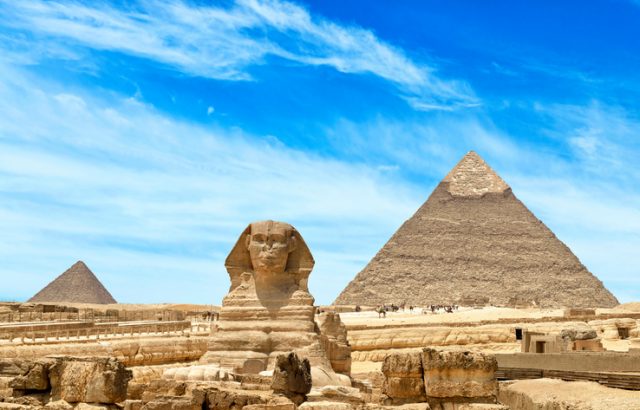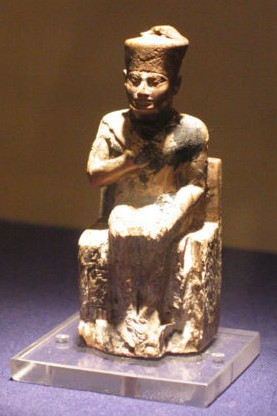As the last remaining landmark of the Seven Wonders of the Ancient World, the Great Pyramid of Giza is not only a tremendous sight but a holder of mysteries. No one is sure when Giza was built, for one thing. Some say 3200 B.C., others say more like 5000 B.C., and an outlier opinion says the Great Pyramid is far older even than that.
Now a new theory about Giza has everyone talking.
Research by an international team of physicists claims that the Great Pyramid can concentrate electromagnetic energy in its internal chambers and under its base. The 481-foot building is capable of creating pockets of higher energy and funneling it, they say, based on their tests.


The researchers, who are from ITMO University in St. Petersburg and the Laser Zentrum in Hanover, Germany, believe the pyramid concentrates its energy in its hidden chambers, which contain the remains of Pharoah Khufu and his wife.


In a paper published in the Journal of Applied Physics, they say: “It is revealed that the Pyramid’s chambers can collect and concentrate electromagnetic energy… In the case of the Pyramid on the substrate, at the shorter wavelengths, the electromagnetic energy accumulates in the chambers providing local spectral maxima for electric and magnetic fields. It is shown that basically the Pyramid scatters the electromagnetic waves and focuses them into the substrate region.”
Before alien-arrival stories reach hyperdrive, it’s important to note that electromagnetic radiation, which includes visible light and radio waves, is around us all the time. And, the authors of the paper do not think that those who built Giza thousands of years ago knew anything about the science behind electromagnetic energy or built it deliberately to do this.
“Egyptian pyramids have always attracted great attention,” Andrey Evlyukhin, the coordinator of the research, said in a statement. “We as scientists were interested in them as well, so we decided to look at the Great Pyramid as a particle dissipating radio waves resonantly.”
Disturbing occasions when ancient Egyptian curses seemed to come true
The researchers created a model of the Great Pyramid of Giza to see how electromagnetic radiation such as gamma rays, visible light, and ultraviolet light reacted to the pyramid and if the energy waves were absorbed by the structure, according to earth.com.
The model was exposed to wave energy lengths of 656 to 1,968 feet because the team’s calculations showed that these wavelengths are the ones that would resonate within the pyramid. Analysis revealed how the Great Pyramid of Giza channeled the electromagnetic energy.
The results showed that the Great Pyramid can focus energy through empty spaces, which create high pockets of energy below its base.
If the researchers could replicate this on a nanoscale, it would have immense applications for creating solar cells.
“Choosing a material with suitable electromagnetic properties, we can obtain pyramidal nanoparticles with a promise for practical application in nanosensors and effective solar cells,” Polina Kapitainova, an author of the study, said in a statement.
The “results can be applied to design nanoparticles capable of reproducing similar focusing effects in the optical range,” scientist Andrey Evlyukhin said in an interview. “Such nanoparticles can be used as building blocks for construction of different optical devices for management of light energy at nanoscale.”
Read another story from us: Is Mummy coming for dinner? Wealthy Europeans consumed ground mummies
The Great Pyramid of Giza took perhaps 20 years to build. It is the largest of the three pyramids that border El Giza, Egypt, and is one of the largest pyramids ever built.
Another mystery about it is that the mortar used to build the Giza Pyramid cannot be reproduced today, even though countless people have analyzed it. No one has been able to identify the exact technology that the Ancient Egyptians employed to create this wonder.
Nancy Bilyeau, a former staff editor at Entertainment Weekly, Rolling Stone, and InStyle, has written a trilogy of historical thrillers for Touchstone Books. For more information, go to www.nancybilyeau.com.

